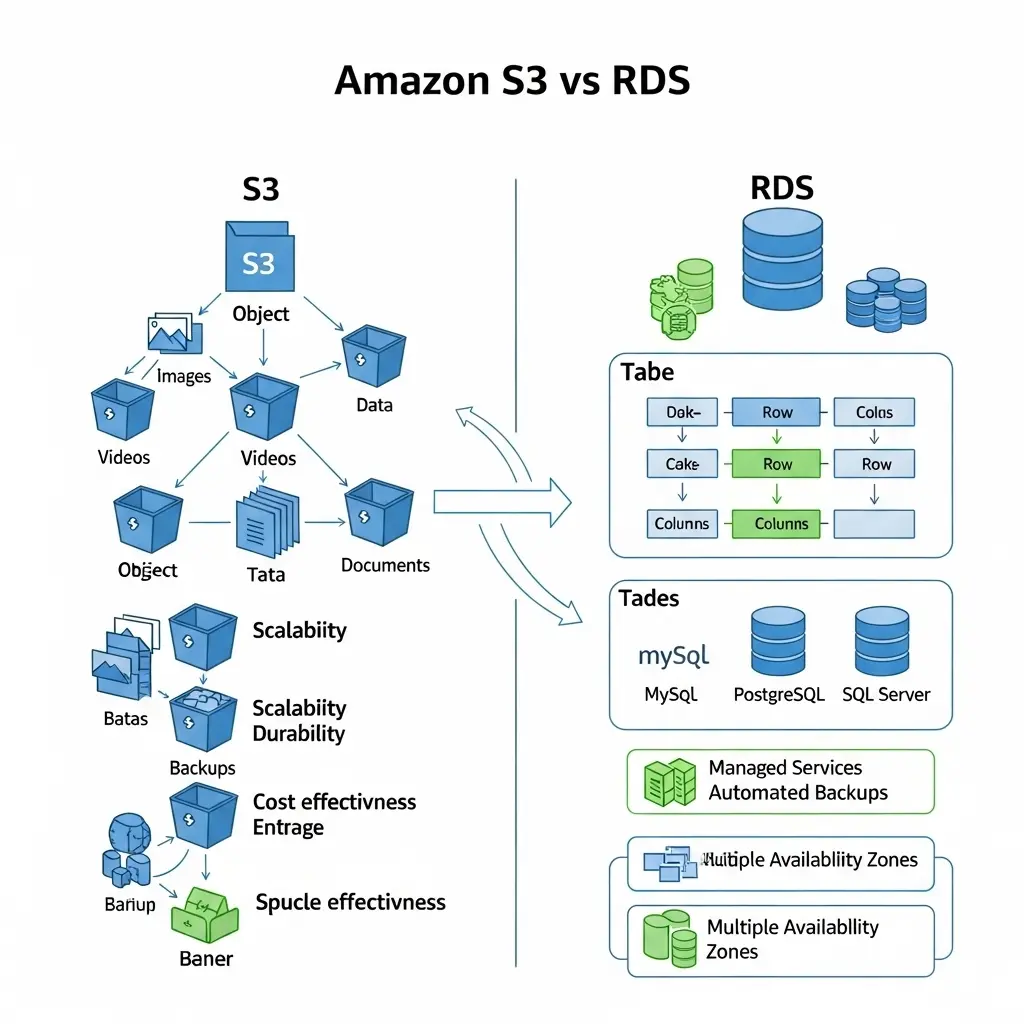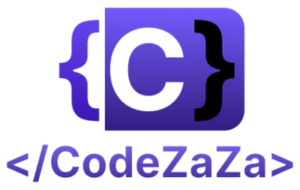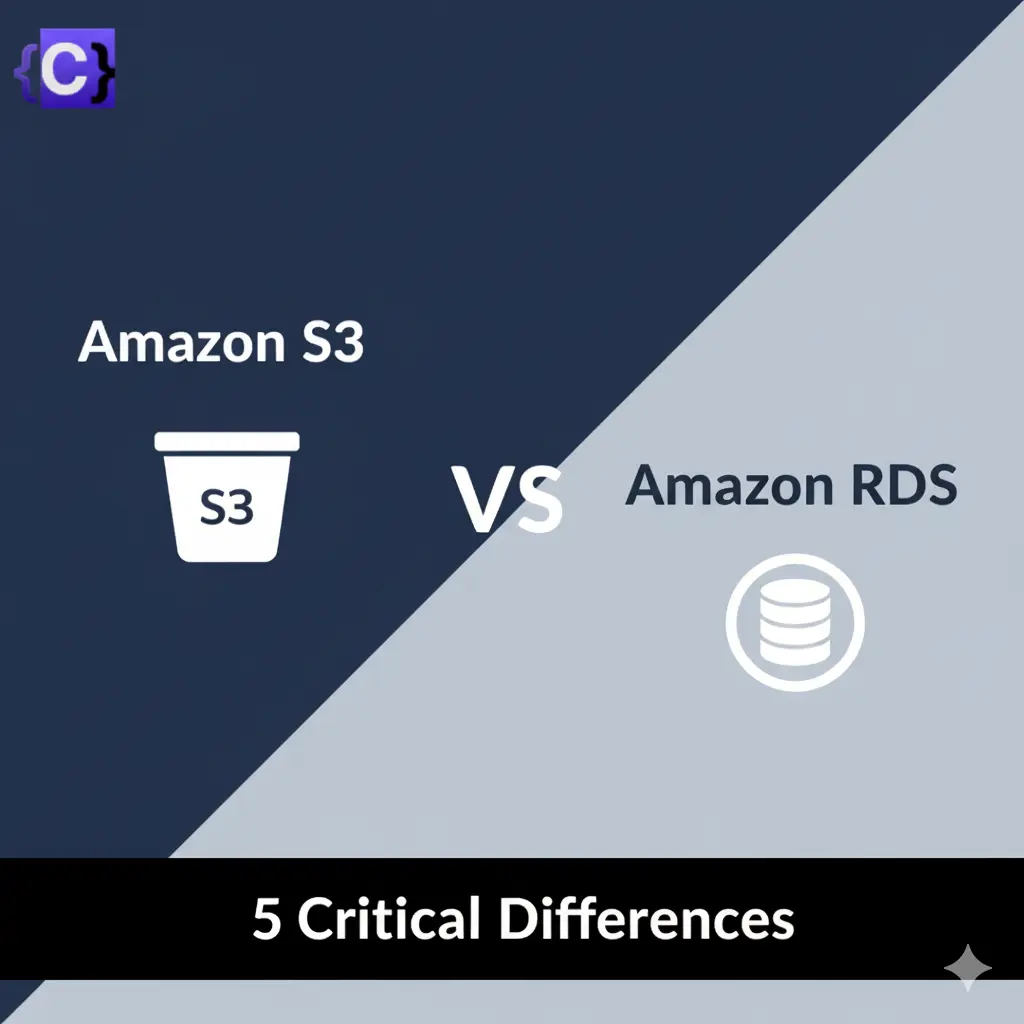Managed services give organizations reliable and ready-to-use software without the need to design or maintain it. Small and medium businesses benefit the most because they often lack the time or budget to build such systems. Today, even large enterprises with strict security needs are moving toward managed services because of their flexibility and ease of use.
With many providers and use-case-specific solutions available, choosing the right service can feel overwhelming. This post compares two popular managed services from Amazon—AWS S3 and AWS RDS—based on five key factors.
Understanding AWS RDS and Amazon S3

Amazon RDS – Relational Database Service

Modern organizations handle many types of data, and one storage type cannot meet all needs. Often, businesses need to store structured data in a fixed schema for easy access and processing. This requirement is best served by a relational database.
AWS Relational Database Service (RDS) is a fully managed relational database that runs on a pay-as-you-go model. It supports popular database engines such as MySQL, MariaDB, PostgreSQL, and SQL Server. Users can select instance types based on performance needs and budget. RDS also offers multiple security settings and options for data redundancy, allowing businesses to configure it for their use case.
Amazon S3 – Simple Storage Service

Many companies also need scalable, schema-less storage to handle any type of data in object format. In traditional setups, this was achieved with distributed file systems like Hadoop. AWS Simple Storage Service (S3) provides a cloud-based replacement with high scalability and low complexity.
With S3, users only pay for the storage they use. It automatically scales as data grows and offers fine-grained access control. Businesses can also enable public data access when needed.
S3 acts as a central data hub in AWS. It integrates with other services for real-time ingestion via Kinesis, data offloading from Redshift, and archival backups from DynamoDB. With features like cross-region replication, S3 ensures both scalability and business continuity.
Comparing Amazon S3 vs RDS
Now that we are clear about the different requirements that lead to these entirely different services, let us explore in the detail the differences between them and how you can choose one for your use case.
Relational vs Object Storage
A relational database stores information in a hard schema that is not expected to change over a lifetime. This limits the kind of data that can be stored in a relational database. The bright side is that such a schema opens up the possibility of the structured query language that can be used to retrieve and aggregated information according to specific rules. It also means that indexes can be built on the information based on the attributes using which data will be frequently accessed.
On the other hand, object storage is able to virtually store anything ranging from text documents to images, audio files, video files, or even semi-structured data like JSON or XML files. Having the ability to store virtually anything is achieved by compromising on the ability to process information in the storage layer. If data needs to be processed, a separate execution engine that can make sense of the stored information is needed.
Support for Transactions
One of the biggest differences between the two storage systems is in the consistency guarantees in the case of storage operations involving a sequence of tasks. While S3 is strongly consistent, its consistency is limited to single storage operations.
On the other hand, RDS supports transactions that allow one to execute a series of operations while maintaining consistency and even providing an option to roll back the operations in case of the steps go wrong. If S3 is to be used for a requirement like this, an additional layer to handle the transaction aspect will have to be custom-built using AWS lambda functions.
Data Processing
RDS has built-in support for data processing. Its execution engine is tightly integrated with the storage layer. This allows RDS to efficiently perform complex operations like windowing and aggregation.
S3, in contrast, is purely a storage service without an execution engine. AWS provides separate managed services to process S3 data. Since S3 stores data in any format, you often need to parse it into a specific format before processing.
For example, AWS Athena lets you run SQL queries directly on S3 data by first defining metadata. Another option is Redshift Spectrum, which enables querying S3 data through the Redshift engine by creating tables over the stored objects.
Pricing
The pricing of S3 is cheaper compared to RDS. But it is to be noted that S3 is only a storage layer and if you have processing requirements, you will need to pay for another service from Amazon.
S3 pricing is specified in terms of storage requirements and network requirements. It starts from 0.025$ per GB up to 50 TB per month and keeps going down as you use more. Retrieve and insertion requests are charges at 0.005 $ per 1000 requests. The data transfer out of S3 is free up till the first GB/month. After that, it is charged at 0.09 $ per GB for the next 10 TB.
RDS pricing varies according to the database engine that is needed. AWS Aurora, which is the proprietary database engine from Amazon, is charged at 0.1 $ per GB per month for storage and 0.2 $ per a million requests. Other storage engines are charged according to the instance type that is used to deploy. A MySQL instance with the cheapest instance type costs about 0.017 $ per hour and an additional 0.115 $ per GB per month for storage.
Use Cases
RDS works well when data has a clear structure and you need frequent inserts, updates, or processing. It is ideal for customer-facing applications that store user data and for running transactional workloads. In some cases, RDS can even serve as a data warehouse if most of the data is relational.
S3 is ideal for storing data with high variety, especially when the structure of incoming data is unpredictable. Businesses often use it as a staging area to dump raw data before processing. S3 is commonly used to store images, audio, video, and other files. You can also serve content directly by defining public addresses for S3 objects.
For unstructured data, S3 files can be indexed in Elasticsearch to enable full-text search. S3 also works well for semi-structured data like JSON or XML. Execution engines can later define tables on top of this data for processing.
Additionally, S3 can store data that will later be imported into an RDS instance, a common pattern during database migrations. It also serves as a central staging area for curated datasets, which can then be loaded into relational databases like Amazon Aurora or analytics platforms such as Azure Synapse.
Comparison Table
| Feature | Amazon RDS | Amazon S3 |
| 1. Relational vs Object Storage | Relational storage with a fixed schema, suitable for structured data | Object storage for diverse data types (text, images, audio), without schema constraints |
| 2. Support for Transactions | Supports multi-operation transactions with consistency and rollback | Strong consistency for single operations; lacks built-in transaction support |
| 3. Data Processing | Integrated processing engine supports complex queries and aggregations | Requires external tools (e.g., Athena, Redshift Spectrum) for processing and querying data |
| 4. Pricing | Higher costs; varies by database engine and instance type | Lower cost for storage; pay-as-you-go for additional requests and data transfer |
| 5. Use Cases | Ideal for structured data with frequent updates, transactional workloads, or user applications | Suitable for unstructured data, media files, backups, and data lake or staging area for ETL |
Conclusion
In this article, you learned about comparing Amazon S3 vs RDS. AWS S3 and AWS RDS are completely different storage services for specific use cases. Since they are both parts of the AWS ecosystem, they integrate well with each other through the AWS services like AWS data pipeline, AWS migration services, etc. But, like all AWS services, the integration support is not great if one of the parties is outside the AWS ecosystem like from a different cloud provider or another independent cloud-based service.


